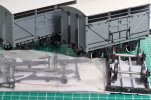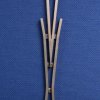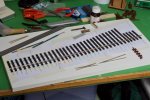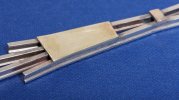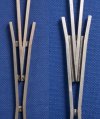Richard Gawler
Western Thunderer
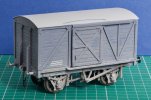
This model never made it to a pristine condition. Having painted the sides and underframe I masked everything with some care, picked up the wrong rattle can and sprayed the roof. And I didn't notice until I had let it start to dry and took the model back to its siblings. So then, trying to take a short cut I partially masked the model and propped up some bits of card while I applied the wanted colour.
Needless to say, a tiny bit of the new roof colour made its way onto the sides. So I ended up having a go at weathering the underframe and the lower sides to blend everything together.
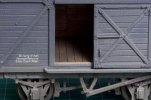
Party piece.
This is an unfitted wagon. The inscription is slightly tongue in cheek but represents how I would like my layout to be. This is very much an ex-Midland Railway van.
I am using a Humbrol airbrush, the single-action sort you can buy for about £15. It works fine for putting on slabs of colour like on the sides of the van but my attempts at weathering look a bit splattered. This was with the air pressure turned right down to 10psi. I want to do something more subtle, I suspect I have reached the limit of what I can achieve with this airbrush.
Last edited:




